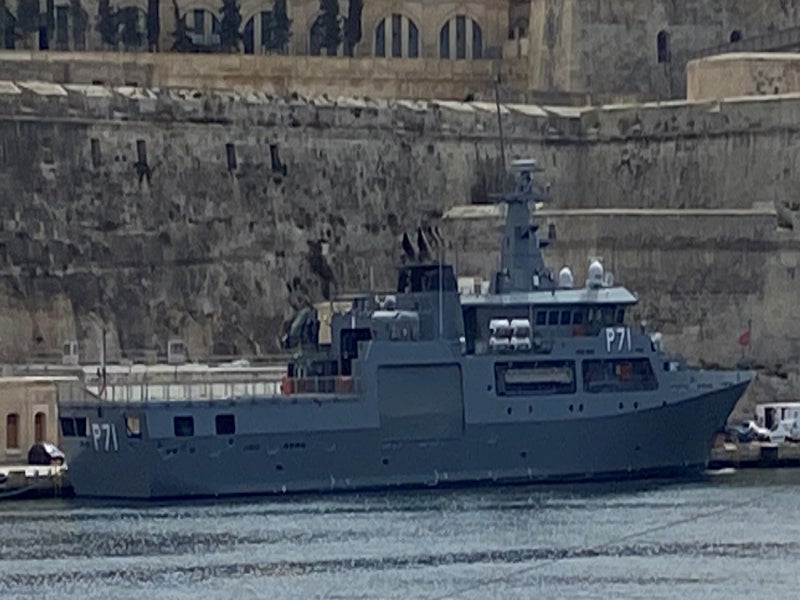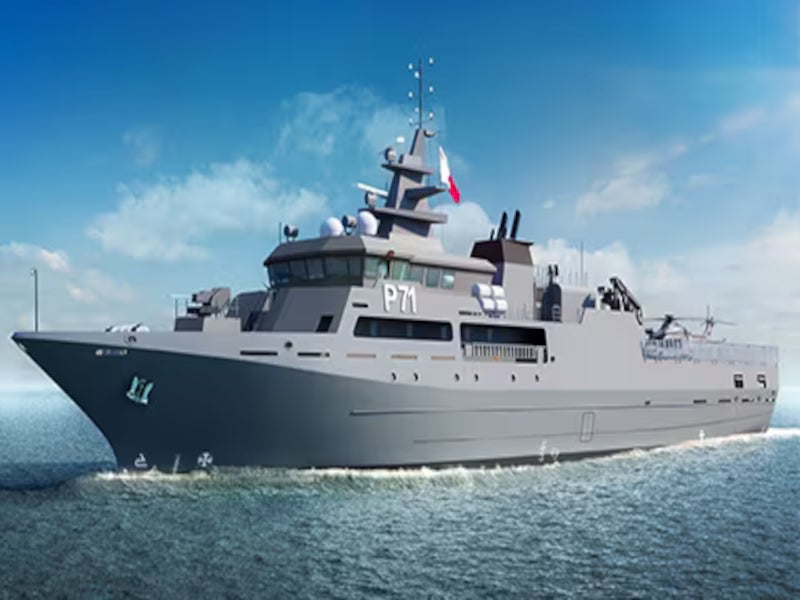P71 is an offshore patrol vessel (OPV) built by Cantiere Navale Vittoria, an Italian shipbuilding company, for the Armed Forces of the Republic of Malta.
The vessel is deployed to perform a range of missions including coastal surveillance, search and rescue operations, extended patrolling on the high seas, and border control operations in the Mediterranean region.
The patrol ship was developed under a project launched by the Armed Forces of Malta in 2015 to develop a more capable OPV to modernise and enhance its force.
Cantiere Navale Vittoria signed a €50m contract to build the OPV in January 2019. The contract was 75% co-financed by the EU under the Internal Security Fund.
OPV P71 completed its sea trials at the Chioggia port and reached the port of Valletta in November 2022. The new flagship of the Armed Forces of Malta entered service with the Maritime Squadron unit at the Haywharf naval base in Floriana in March 2023.
P71 complements Malta’s existing Saettia-class OPV P61 patrol vessel and meets the requirement for a vessel with increased range and sea-keeping, and manoeuvring capabilities.
The vessel will replace P62, a former Irish navy OPV, which was delivered to Malta in 2015.
OPV P71 design and features
The OPV P71 is 74.8m in length with an overall beam of 13m and a maximum draught of 4.8m. The vessel has a full load displacement of 2,244 tonnes (t). It can accommodate 50 crew members and has the capacity for additional 20 people.
The twin-screw vessel features an integrated bridge in an elevated position to offer a 360-degree view. The platform also includes side passages for personnel on the main deck and around the bridge.
A launch and recovery station in the aft area below the flight deck can accommodate a 9.1m rigid hull inflatable boat (RHIB). The area also includes additional space for supplies and crew.
The overhead flight deck has doors for the loading and unloading of materials using a special crane installed on the ship’s port side.
Another RHIB station is present on the starboard side of the platform in the main area of the vessel. The RHIBs can sail at a maximum speed of more than 40 knots and are used in maritime traffic control and search and rescue operations.
Furthermore, the vessel features a helicopter deck which can be used for the landing and refuelling purposes of a 7t helicopter such as the AFM’s AgustaWestland 139.
Remote manoeuvring capability of P71
The navigation officers onboard P71 can manoeuvre the vessel remotely from the bridge wings, using a Rolls-Royce CanMan Touch handheld joystick, in addition to traditional propulsion control systems.
The joystick enables controlling of engines, rudders, propulsion and manoeuvring propellers using an algorithm for single-lever control of the ship.
The ship is also equipped with mobile stabiliser fins to provide enhanced stability.
Armament details
The vessel is equipped with a 25mm OTO SINGLE Oerlikon KBA remote-controlled weapon station, a 12.7mm machine gun and two 7.62mm machine guns. The ship is also armed with level-two armour.
Propulsion system and performance details
The OPV P71 is powered by a hybrid propulsion system, including two WARTSILA 16V26 diesel engines with an output of 5,440kW each and two electric motors located on two axes driving two PROMAS variable pitch propellers.
The vessel is also equipped with bow and stern thrusters. It has a maximum speed of more than 20 knots.
Contractors involved
Wartsila, a marine engine manufacturing company based in Finland, provided the Wartsila 16V26 engines for the vessel.
Rolls-Royce supplied the propulsion package for the vessel, including the PROMAS controllable pitch propellers and rudders, SC722 FCP steering gear, a TT1300 bow thruster, and a TT100 stern thruster.
The company also provided fin stabilisers, and a touch-screen remote control system incorporating the CanMan Touch handheld joystick for all units.






